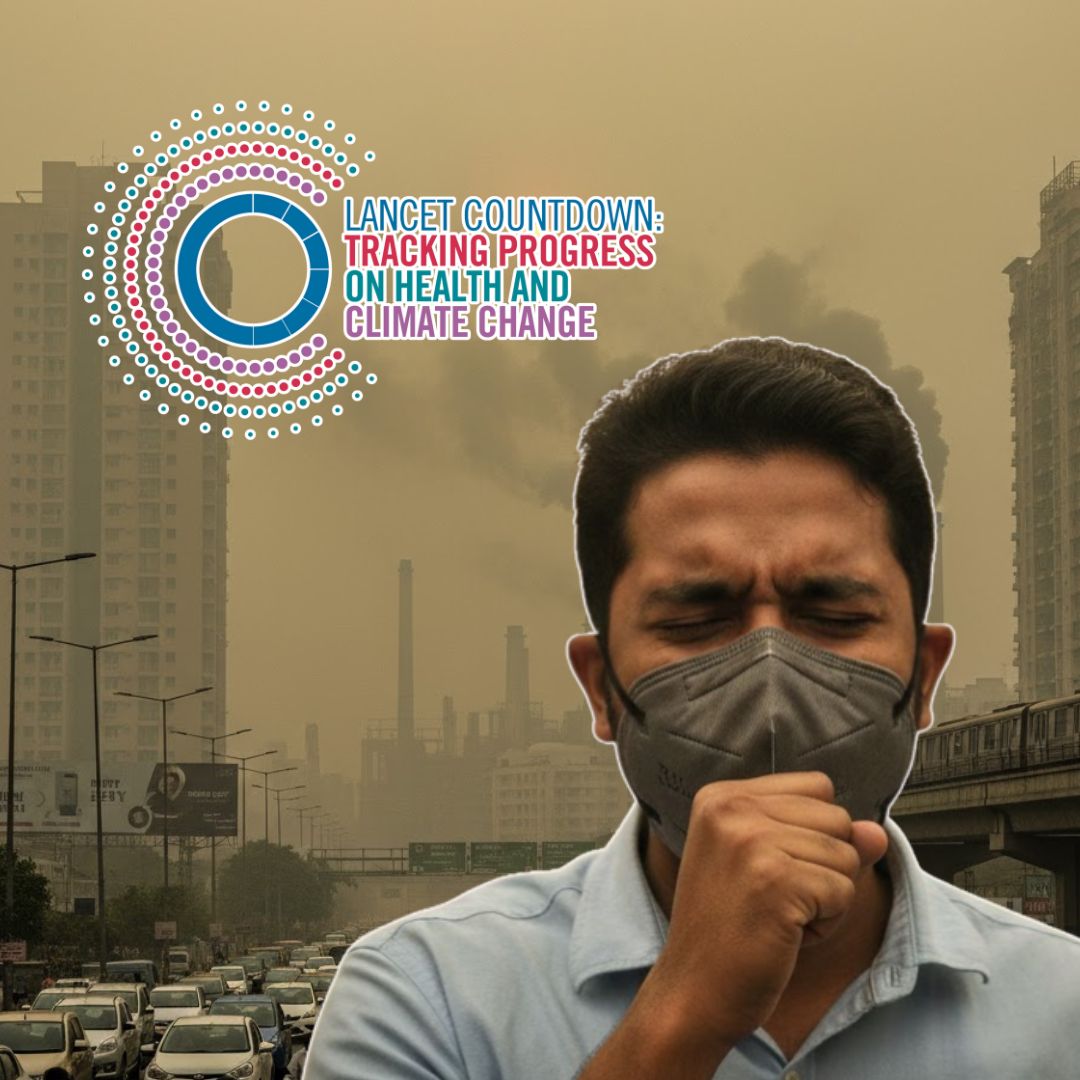The 2025 Lancet Countdown report reveals a severe air pollution crisis in India, with 1.72 million deaths attributed to PM 2.5 exposure in 2022, marking a 38% rise since 2010.
The deadly impact stems largely from fossil fuel use, especially coal-powered plants and petrol-fuelled vehicles. The economic cost was nearly USD 340 billion, close to 9.5% of India’s GDP.
Despite some government disputes on death estimates, experts confirm the catastrophic health toll and call for urgent pollution control measures and sustainable energy transitions to protect public health.
Understanding PM 2.5 and Its Health Impact
PM 2.5 refers to fine particulate matter less than 2.5 micrometers in diameter, about 30 times smaller than the width of a human hair. Due to its minute size, PM 2.5 can penetrate deep into the lungs and enter the bloodstream, causing severe respiratory and cardiovascular problems.
Short-term exposure can lead to hospital admissions for heart and lung conditions, asthma attacks, and respiratory symptoms, while long-term exposure increases the risk of premature death, lung cancer, chronic respiratory diseases, and reduced lung function. Vulnerable groups like children, elderly, and those with preexisting health conditions bear the brunt of these effects.
The WHO has highlighted PM 2.5 as the most hazardous air pollutant globally, emphasizing the urgent need to control its sources.
Toxic Air Pollutants Drive Mortality Surge
India’s air pollution crisis is largely driven by anthropogenic PM 2.5 pollution, primarily from fossil fuel combustion. Coal power plants alone caused nearly 300,000 deaths, while petrol vehicles accounted for about 269,000 in 2022. Rural areas suffer higher mortality rates due to household pollution from traditional fuels.
The magnitude of deaths linked to PM 2.5 exposure exceeds three times the official COVID-19 toll for that year, making it a major public health emergency. The report’s findings serve as a stark warning that pollution-related diseases, including heart disease, lung cancer, diabetes, and dementia, are on the rise without robust intervention.
Economic and Social Impacts Amplify Urgency
The economic consequences of air pollution in India are devastating, with premature deaths costing approximately USD 339.4 billion, or 9.5% of GDP in 2022. Beyond health impacts, pollution reduces productivity, raises healthcare expenditure, and contributes to climate change, which worsens health outcomes via increased heatwaves and environmental degradation.
India’s readiness to transition to low-carbon cleaner energy declined in 2024, signaling challenges ahead. Integrated policies that address pollution control, public health, and climate action are essential to reverse these trends and protect vulnerable communities.
The Logical Indian’s Perspective
This alarming Lancet report underscores an urgent call for collective action rooted in empathy, responsibility, and justice. Trailing pollution’s disproportionate harm to the vulnerable must mobilize citizens, policymakers, and industries toward cleaner energy, stricter emissions standards, and greater awareness.
Air pollution is not just an environmental or economic issue; it is a profound health and social justice crisis.












